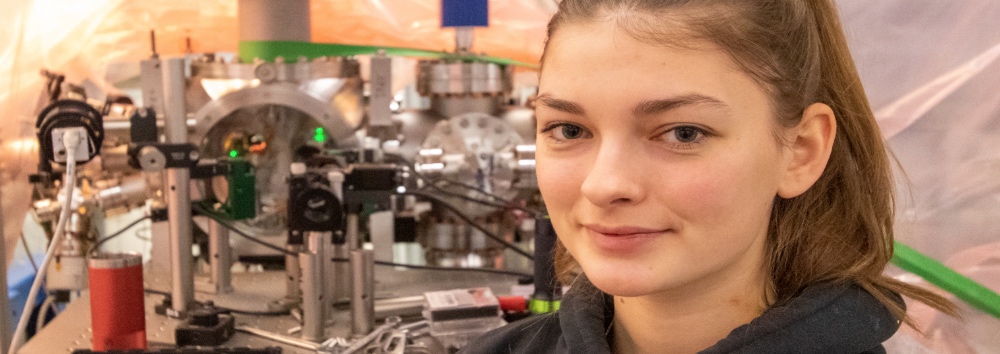Since girls day 2020 has been cancelled, we wanted to share a story about a previous event. Interested in maths and physics from an early age, Emilia Bertonasco was encouraged by her father to take part in the Girls’ Day at European XFEL. She enjoyed it so much she returned the following year to do a three week school practical at the facility. Via a chance encounter several years later, we learnt that Emilia is now studying Physics at the Humboldt University in Berlin and invited her to visit us again. Here she talks about her experience at European XFEL all those years ago and how that influenced her decision to study physics.
Welcome back to European XFEL! What’s it like to be here again?
Really cool! As part of the three week school practical I did here when I was in 9th grade in 2014, we visited the building site and went down into the hall and tunnel. Back then it was just a lot of concrete. It’s great to come back and see everything finished and equipped.
Your first contact with European XFEL was a year earlier, however, when you took part in the Girls’ Day while you were in 8th grade. How did that come about?
My dad suggested it might be something for me after seeing the event advertised on the Girls’ Day webpage. I actually thought I’d decided to study physics later than that, but I recently found a diary I kept during the 7th grade and saw that I’d written then ‘I want to study physics’! Already in the 7th grade I enjoyed maths and physics and chemistry. I guess that’s why my Dad suggested I visit European XFEL.
Do you remember what you did on that day?
Not in detail, it’s too long ago! But I remember we went down into the HERA tunnel at DESY and talked to European XFEL scientists. It must have enjoyed it; otherwise I wouldn’t have decided to do the practical the following year.
About European XFEL
The European XFEL is a 3.4 km long research facility extending from Hamburg to the neighbouring town of Schenefeld in the German Federal State of Schleswig-Holstein. With its repetition rate of 27,000 pulses per second and a peak brilliance a billion times higher than that of the best synchrotron X-ray radiation sources, the European XFEL enables the investigation of scientific problems in a variety of disciplines, including among many others: Structural Biology, Chemistry, Planetary Science, the study of matter under extreme conditions.



